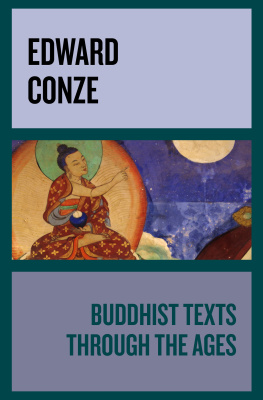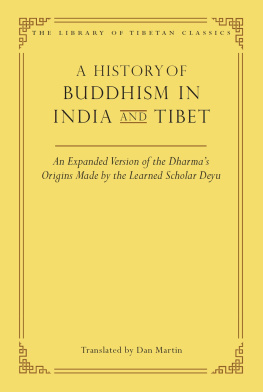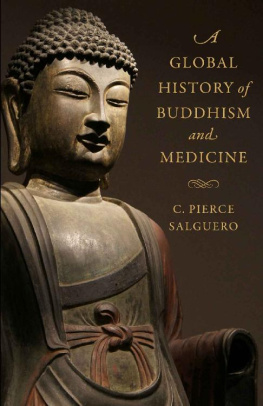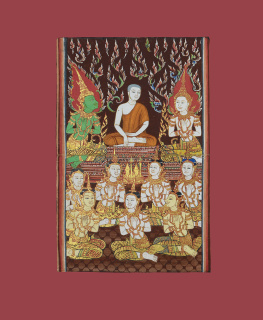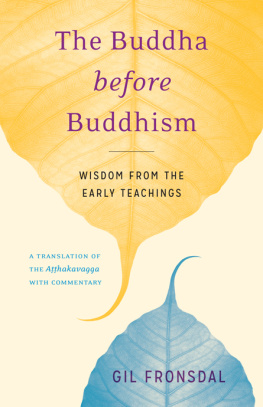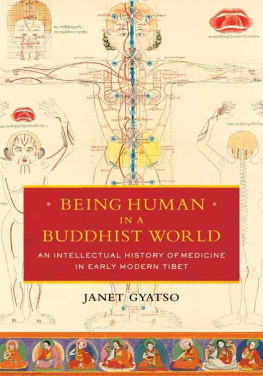Contents
Guide
Pagebreaks of the print version
Buddhism and Medicine
Buddhism and Medicine

AN ANTHOLOGY OF PREMODERN SOURCES
C. Pierce Salguero
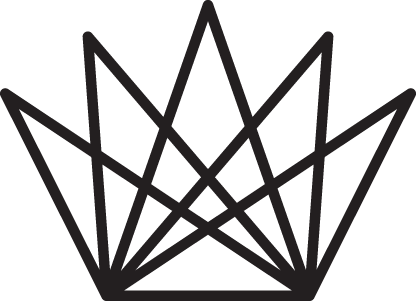
COLUMBIA UNIVERSITY PRESS
NEW YORK
Columbia University Press
Publishers Since 1893
New YorkChichester, West Sussex
cup.columbia.edu
Copyright 2017 Columbia University Press
All rights reserved
Library of Congress Cataloging-in-Publication Data
Names: Salguero, C. Pierce, editor.
Title: Buddhism and medicine : an anthology of premodern sources / [edited by] C. Pierce Salguero.
Description: New York : Columbia University Press, 2017. | Includes bibliographical references and index.
Identifiers: LCCN 2016030050 (print) | LCCN 2017013992 (ebook) | ISBN 9780231544269 (electronic) | ISBN 9780231179942 (cloth : alk. paper)
Subjects: LCSH: HealingReligious aspectsBuddhism. | SufferingReligious aspectsBuddhism.
Classification: LCC BQ4570.H43 (ebook) | LCC BQ4570.H43 B83 2017 (print) | DDC 294.3/3661dc23
LC record available at https://lccn.loc.gov/2016030050
A Columbia University Press E-book.
CUP would be pleased to hear about your reading experience with this e-book at .
Cover image: Mural painting of Bhaiajyaguru, Shanxi province, China, 14761496. Courtesy of University of Pennsylvania Museum of Archaeology and Anthropology, object no. C688.
For Marcie
CONTENTS
Dhivan Thomas Jones
Anlayo
Alexander O. Hsu
C. Pierce Salguero
Amy Paris Langenberg
Dan Lusthaus
Edward R. Drott
C. Pierce Salguero
William J. Giddings
David Fiordalis
Amy Paris Langenberg
David Fiordalis
C. Pierce Salguero
J. E. E. Pettit
Ann Heirman and Mathieu Torck
Christoph Kleine
Marcus Bingenheimer
Phyllis Granoff
Michael Slouber
Gregory Schopen
C. Pierce Salguero
D. Max Moerman
Pamela D. Winfield
Peter D. Sharrock and Claude Jacques
Gregory Schopen
William J. Giddings
Michael Slouber
C. Pierce Salguero
Paul Copp
Joshua Capitanio
Stephen F. Teiser
Anna Andreeva
Benedetta Lomi
Justin Thomas McDaniel
Vesna A. Wallace
Eric M. Greene
C. Pierce Salguero
Juhn Ahn
Robban Toleno
Matthew T. Kapstein
Douglas Duckworth
Todd P. Marek and Charles Jamyang Oliphant of Rossie
Andrew Skilton and Phibul Choompolpaisal
Ori Tavor
Dominic Steavu
Michael Stanley-Baker and Dolly Yang
Marta E. Hanson
St phanie Homola
Don Baker and Hyunsook Lee
William A. McGrath
Andrew Macomber
Michael Stanley-Baker
Nathan Sivin
Katja Triplett
Taehyung Lee and Kang Yeonseok
Andrew Edmund Goble
C. Michele Thompson
Leslie E. de Vries
Pyi Phyo Kyaw
Barbara Gerke and Florian Ploberger
Barbara Gerke and Florian Ploberger
Janet Gyatso
T he editor wishes to thank all of the contributors to this volume for their patience, diligence, and insights shared over the time it took to compile and edit this work. He especially wishes to thank Stephen Teiser, Nathan Sivin, and Dan Lusthaus, who read far beyond their own chapters and whose suggestions and comments greatly improved the quality of the work as a whole.
AN | Aguttara-Nikya |
BZA | Alternate Translation of the Grouped gama Stras |
Ch. | Chinese |
Cv | Cullavagga |
Dhp | Dhammapada |
DN | Dgha-Nikya |
DZ | Daozang (see Zhang, Shao, and Zhang 1974) |
HPC | Hanguk pulgyo chonso (see Hanguk pulgyo chonso pyonchan wiwonhoe 19792001) |
Jp. | Japanese |
Kr. | Korean |
KS | Kagaku Shoin |
MKDI | Moon King Deg Input |
MKMsA | Moon King Manuscript A |
MKMsB | Moon King Manuscript B |
MN | Majjhima-Nikya |
Mong. | Mongolian |
Mv | Mahvagga |
P | Pelliot chinois Dunhuang manuscript collection |
S | Stein Dunhuang manuscript collection |
S | Sayukta-gama |
SKQS | Siku quanshu (see Shangwu yinshuguan Siku quanshu chuban gongzuo weiyuan hui 2005) |
Skt. | Sanskrit |
SN | Sayutta-Nikya |
T | Taish shinsh daizky (see Takakusu and Watanabe 19241932) |
TBRC | Tibetan Buddhist Resource Center (www.tbrc.org) |
Tib. | Tibetan |
TZ | Taish shinsh daizky zuzo (see Takakusu and Ono 19241935) |
X | Xu zang jing (see Nakano 19051912; Maeda and Nakano 1923) |
ZA | Grouped gama Stras |
ZGR | Zoku gunsho ruij (see Hanawa et al. 19281937) |
C. PIERCE SALGUERO
T exts from across the Buddhist world list illness along with birth, aging, and death as the four great torments that inevitably accompany life in a human body. Since Buddhist doctrine at its very core is focused on the relief of all forms of suffering (Skt. dukha ), Buddhist writings and practices frequently address the question of how to cope with this particular tribulation. Mainstream Buddhist doctrine seeks to mitigate the suffering of illness by stressing the illusory nature of the physical body, the nonexistence of the separate self, and the possibility of radical transcendence through Buddhist practice. Contrary to popular belief, however, Buddhists have never limited themselves to passive or fatalistic approaches to dealing with corporeal disease. For well over two millennia, the sick and those who care for them have found practical, this-worldly advice for preventing and curing maladies within the context of the religion.
Like Buddhism itself, the repertoire of Buddhist approaches to disease, healing, and health maintenance began to coalesce in India in the second half of the first millennium B.C.E. Embedded in Buddhist writings, rituals, and material culture, these Indian ideas and practices were spread by merchants, missionaries, and healer-monks along the Silk Roads and maritime routes to the rest of the Asian continent during the first millennium of the Common Era. Invariably, healing played a central role in Buddhist proselytism in new lands, and it was often among the chief benefits that was held out to new converts. Whether they were individual patients being treated by itinerant ascetics or kings organizing massive protection rituals, devotees across the Buddhist world were encouraged to turn to Buddhist tradition, institutions, and functionaries for methods to cure and prevent the suffering of illness.



